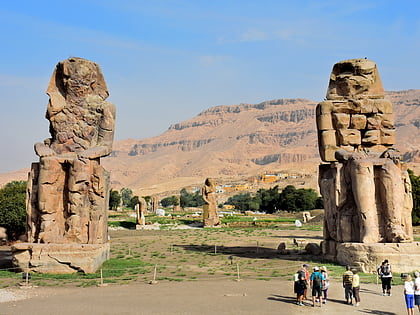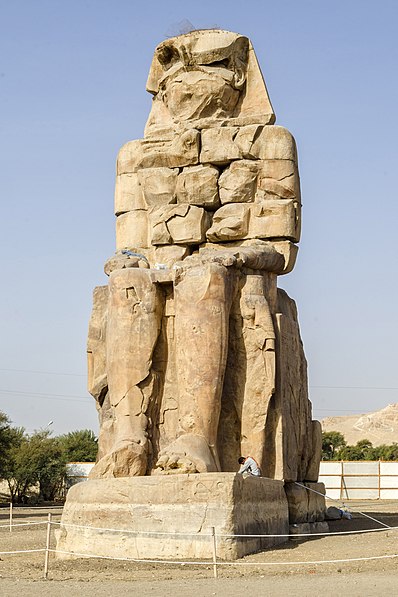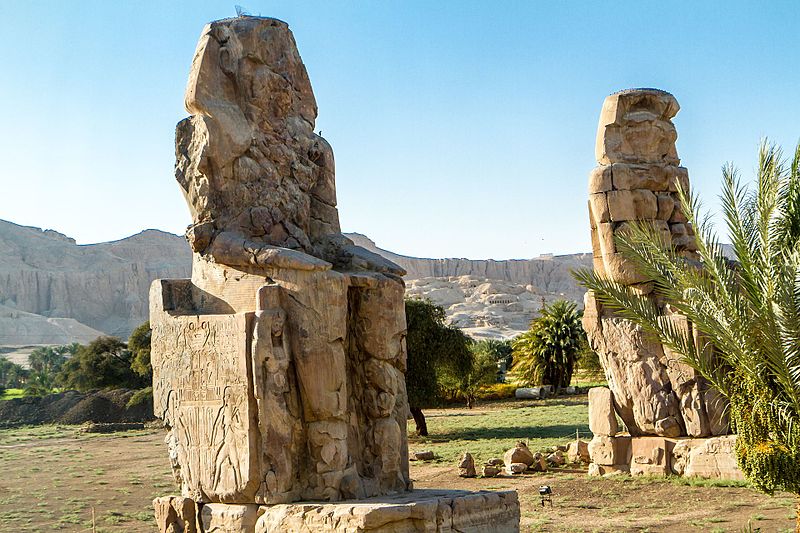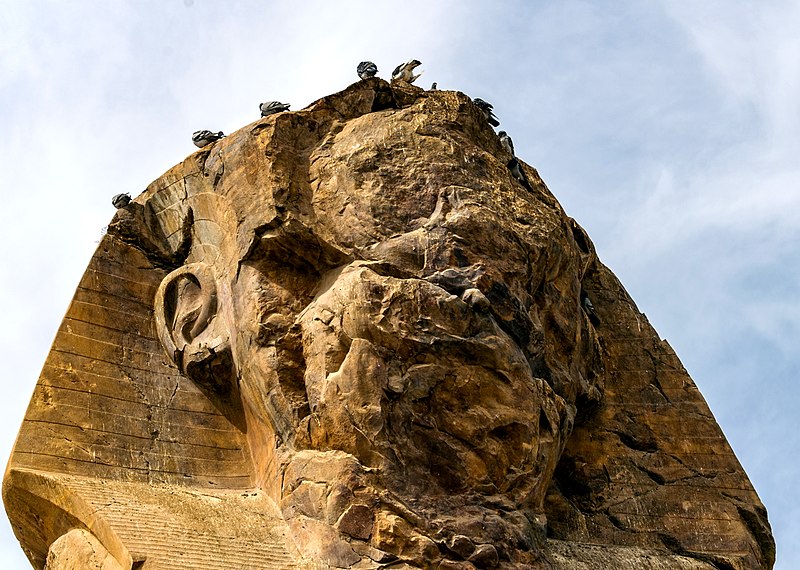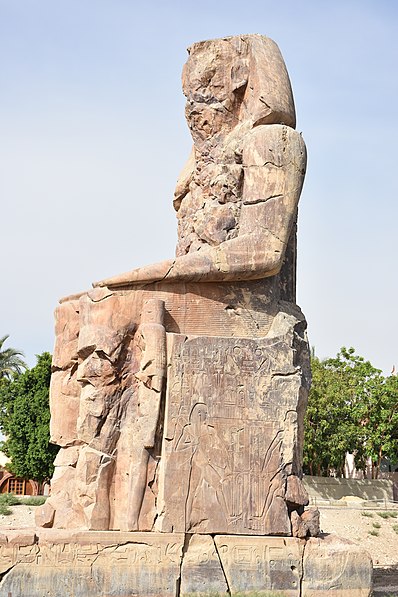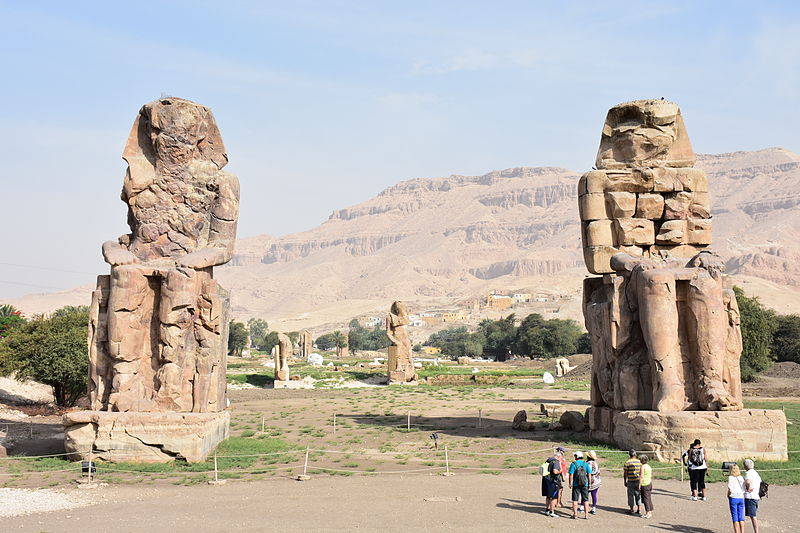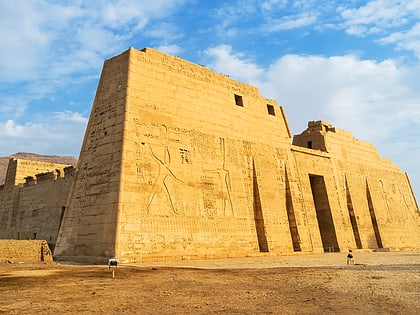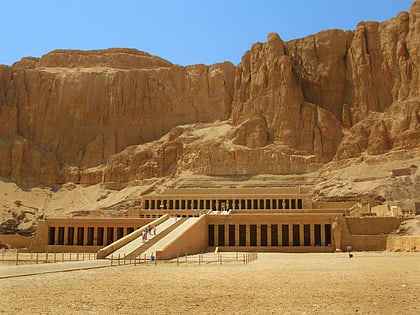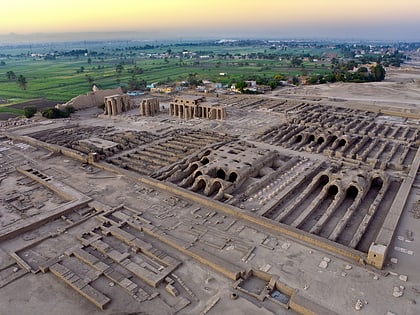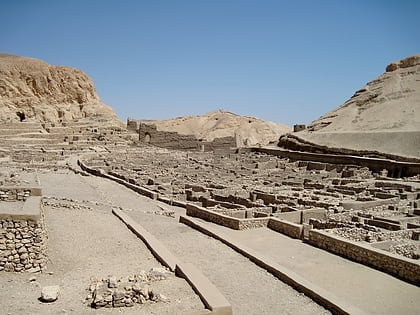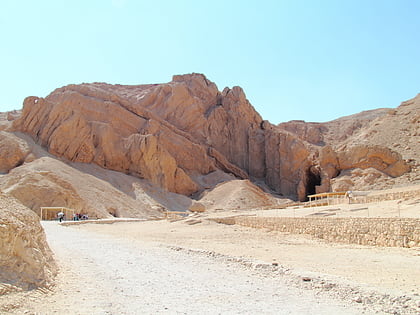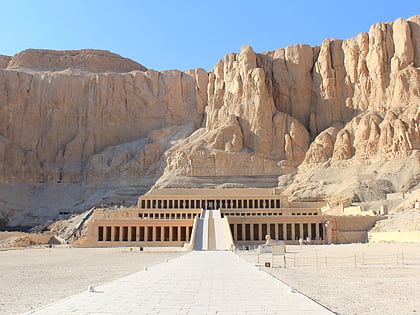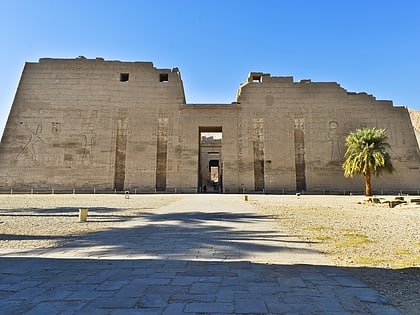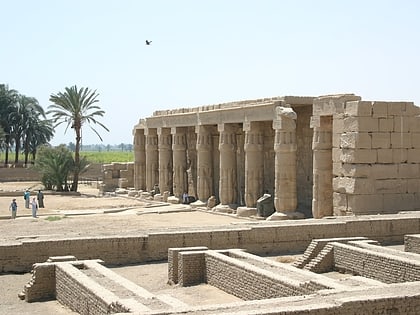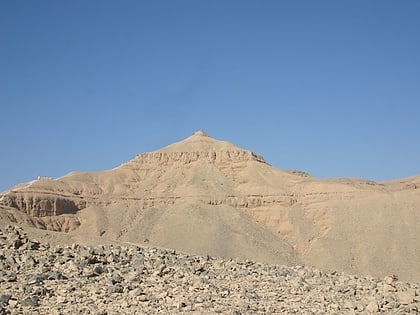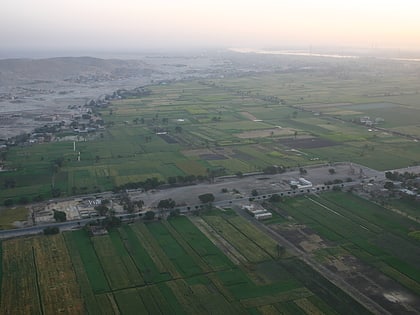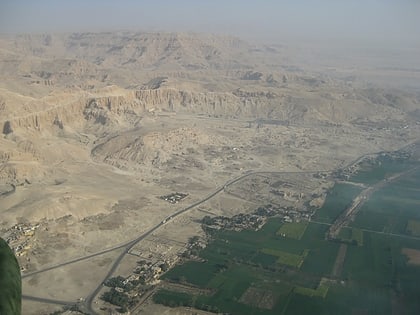Colossi of Memnon, Luxor
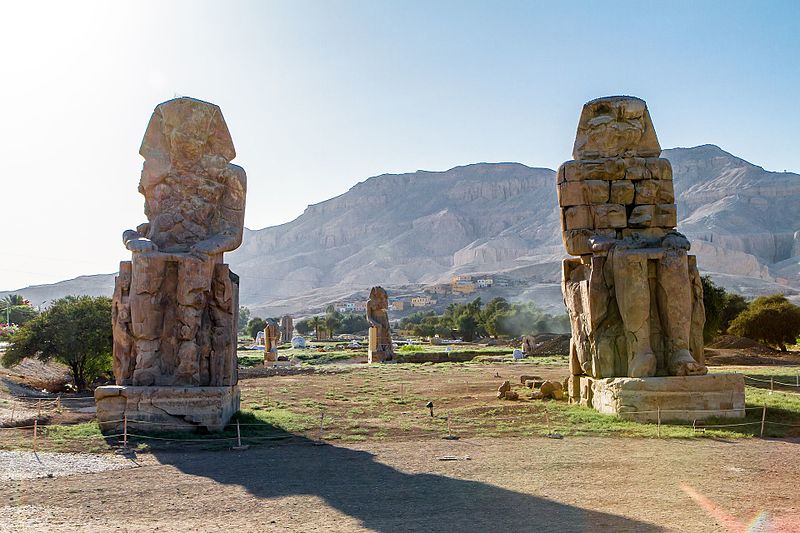
Facts and practical information
The Colossi of Memnon stand as ancient sentinels on the west bank of the Nile in Luxor, Egypt. These massive stone statues, each rising about 18 meters (60 feet) high, have been guarding the mortuary temple of Pharaoh Amenhotep III for more than 3,400 years. Although much of the temple complex has succumbed to time, these two statues remain as a testament to the grandeur of Theban civilization and the ancient pharaoh's legacy.
The statues are carved from blocks of quartzite sandstone and depict the seated king with his hands resting on his knees, facing eastward toward the Nile. Historically, they also served a symbolic function, acting as guardians for the pharaoh's necropolis. Despite the ravages of nature and human interference, the Colossi have endured, albeit with significant damage; the northern statue is famously known to 'sing' at dawn, a phenomenon caused by rising temperatures and humidity that was noted by ancient visitors but ceased after an earthquake in 27 BCE.
Today, the Colossi of Memnon are a popular tourist attraction, offering a glimpse into Egypt's distant past. Visitors come not only to marvel at their size and the craftsmanship but also to contemplate the colossal effort required to construct and transport such monoliths in an era without modern machinery.
Colossi of Memnon – popular in the area (distance from the attraction)
Nearby attractions include: Medinet Habu, Mortuary Temple of Hatshepsut, Ramesseum, Deir el-Medina.
